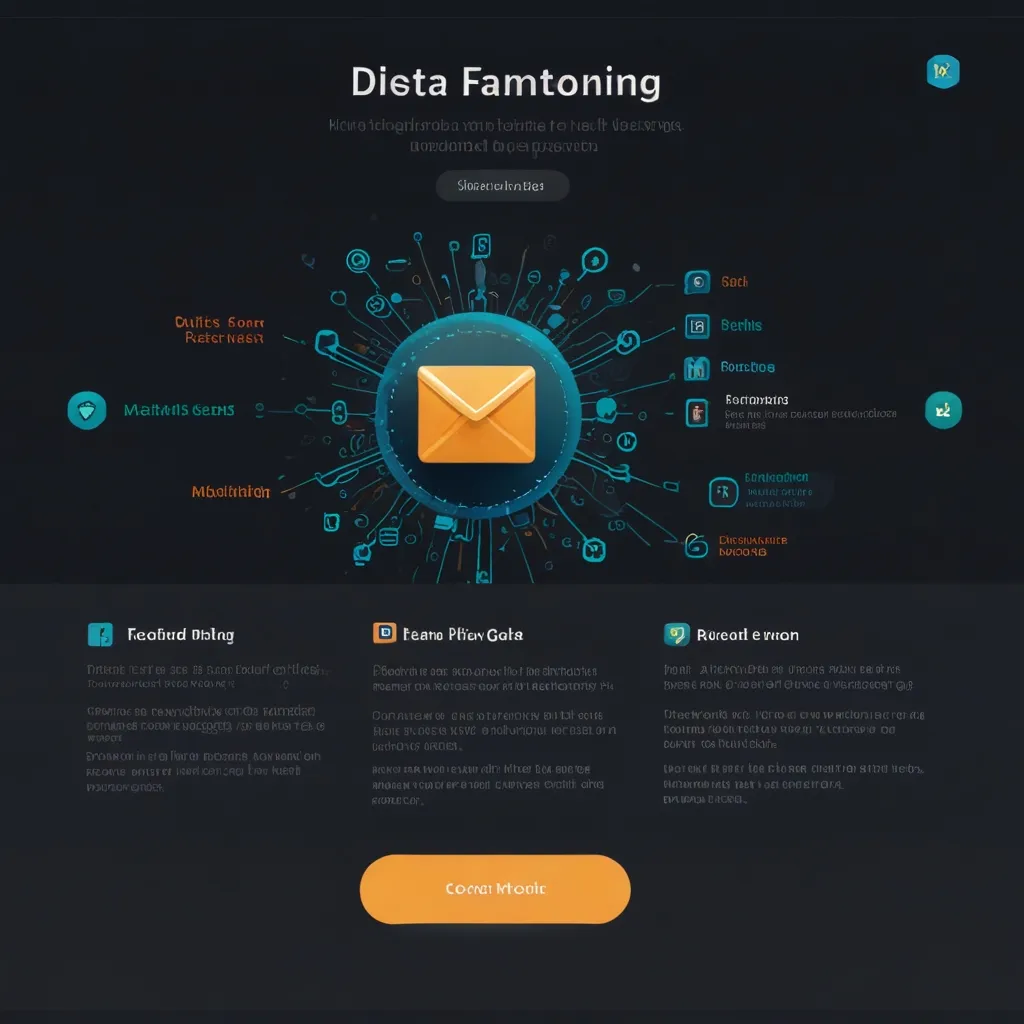Virtual file systems in Python are a fascinating way to extend the capabilities of your programs beyond what’s possible with the standard os and shutil modules. They let you create custom file-like objects and directories that can be manipulated just like real files, but with way more flexibility.
I remember when I first learned about virtual file systems - it was like a lightbulb moment. Suddenly I could create in-memory file systems, wrap remote APIs to look like local files, and do all kinds of cool stuff.
The basic idea is to implement classes that mimic the behavior of files and directories. You’ll typically want to create a File class and a Directory class at minimum. The File class should support common operations like read(), write(), seek(), tell(), etc. The Directory class needs methods for listing contents, creating new files/subdirectories, and so on.
Here’s a simple example of a basic in-memory file class:
class VirtualFile:
def __init__(self, name):
self.name = name
self.content = b''
self.position = 0
def read(self, size=-1):
if size < 0:
data = self.content[self.position:]
self.position = len(self.content)
else:
data = self.content[self.position:self.position+size]
self.position += len(data)
return data
def write(self, data):
self.content = self.content[:self.position] + data + self.content[self.position+len(data):]
self.position += len(data)
def seek(self, offset, whence=0):
if whence == 0:
self.position = offset
elif whence == 1:
self.position += offset
elif whence == 2:
self.position = len(self.content) + offset
def tell(self):
return self.position
This VirtualFile class implements the basic file operations, storing the content in memory as a bytes object. You could extend this to add more methods like close(), flush(), etc.
Now let’s look at a simple Directory class:
class VirtualDirectory:
def __init__(self, name):
self.name = name
self.contents = {}
def add_file(self, file):
self.contents[file.name] = file
def add_directory(self, directory):
self.contents[directory.name] = directory
def get(self, name):
return self.contents.get(name)
def list(self):
return list(self.contents.keys())
With these basic building blocks, you can start to create more complex virtual file systems. For example, you might create a VirtualFileSystem class that acts as the root of your file system:
class VirtualFileSystem:
def __init__(self):
self.root = VirtualDirectory('')
def create_file(self, path):
parts = path.split('/')
directory = self.root
for part in parts[:-1]:
next_dir = directory.get(part)
if next_dir is None:
next_dir = VirtualDirectory(part)
directory.add_directory(next_dir)
directory = next_dir
file = VirtualFile(parts[-1])
directory.add_file(file)
return file
def get_file(self, path):
parts = path.split('/')
item = self.root
for part in parts:
item = item.get(part)
if item is None:
raise FileNotFoundError(path)
if isinstance(item, VirtualDirectory):
raise IsADirectoryError(path)
return item
This VirtualFileSystem class allows you to create files at arbitrary paths, automatically creating any necessary directories along the way.
One of the cool things about virtual file systems is that you can make them behave however you want. For example, you could create a file system that automatically compresses its contents, or one that stores its data in a database instead of memory.
Here’s an example of a simple compressed file system:
import zlib
class CompressedFile(VirtualFile):
def __init__(self, name):
super().__init__(name)
self.compressed_content = b''
def write(self, data):
self.content += data
self.compressed_content = zlib.compress(self.content)
def read(self, size=-1):
self.content = zlib.decompress(self.compressed_content)
return super().read(size)
class CompressedFileSystem(VirtualFileSystem):
def create_file(self, path):
parts = path.split('/')
directory = self.root
for part in parts[:-1]:
next_dir = directory.get(part)
if next_dir is None:
next_dir = VirtualDirectory(part)
directory.add_directory(next_dir)
directory = next_dir
file = CompressedFile(parts[-1])
directory.add_file(file)
return file
This CompressedFileSystem automatically compresses the contents of each file, potentially saving memory at the cost of some processing time.
Virtual file systems can also be used to provide a file-like interface to things that aren’t actually files. For example, you could create a virtual file system that represents a remote API:
import requests
class APIFile(VirtualFile):
def __init__(self, name, url):
super().__init__(name)
self.url = url
def read(self, size=-1):
response = requests.get(self.url)
self.content = response.content
return super().read(size)
def write(self, data):
requests.post(self.url, data=data)
super().write(data)
class APIFileSystem(VirtualFileSystem):
def __init__(self, base_url):
super().__init__()
self.base_url = base_url
def create_file(self, path):
file = APIFile(path, f"{self.base_url}/{path}")
parts = path.split('/')
directory = self.root
for part in parts[:-1]:
next_dir = directory.get(part)
if next_dir is None:
next_dir = VirtualDirectory(part)
directory.add_directory(next_dir)
directory = next_dir
directory.add_file(file)
return file
This APIFileSystem treats HTTP endpoints as if they were files, allowing you to read from and write to them using familiar file operations.
Virtual file systems can also be useful for testing. You can create a mock file system to use in your tests, allowing you to test file operations without actually touching the real file system:
class MockFileSystem(VirtualFileSystem):
def __init__(self):
super().__init__()
self.log = []
def create_file(self, path):
self.log.append(f"Created file: {path}")
return super().create_file(path)
def get_file(self, path):
self.log.append(f"Accessed file: {path}")
return super().get_file(path)
This MockFileSystem logs all file operations, allowing you to verify that your code is performing the expected operations without actually creating any files.
One of the most powerful aspects of virtual file systems is that they allow you to create abstractions that simplify complex operations. For example, you could create a version-controlled file system:
import copy
class VersionedFile(VirtualFile):
def __init__(self, name):
super().__init__(name)
self.versions = [b'']
def write(self, data):
super().write(data)
self.versions.append(copy.deepcopy(self.content))
def revert(self, version):
if 0 <= version < len(self.versions):
self.content = self.versions[version]
self.position = 0
else:
raise ValueError("Invalid version number")
class VersionedFileSystem(VirtualFileSystem):
def create_file(self, path):
parts = path.split('/')
directory = self.root
for part in parts[:-1]:
next_dir = directory.get(part)
if next_dir is None:
next_dir = VirtualDirectory(part)
directory.add_directory(next_dir)
directory = next_dir
file = VersionedFile(parts[-1])
directory.add_file(file)
return file
This VersionedFileSystem keeps track of all versions of each file, allowing you to revert to previous versions easily.
Virtual file systems can also be used to implement more exotic file system designs. For example, you could create a file system where files are stored as nodes in a graph, with links between related files:
class GraphNode:
def __init__(self, name, content=b''):
self.name = name
self.content = content
self.links = set()
class GraphFile(VirtualFile):
def __init__(self, node):
super().__init__(node.name)
self.node = node
def read(self, size=-1):
self.content = self.node.content
return super().read(size)
def write(self, data):
super().write(data)
self.node.content = self.content
class GraphFileSystem:
def __init__(self):
self.nodes = {}
def create_file(self, name):
if name in self.nodes:
raise FileExistsError(name)
node = GraphNode(name)
self.nodes[name] = node
return GraphFile(node)
def get_file(self, name):
if name not in self.nodes:
raise FileNotFoundError(name)
return GraphFile(self.nodes[name])
def link(self, name1, name2):
if name1 not in self.nodes or name2 not in self.nodes:
raise FileNotFoundError
self.nodes[name1].links.add(name2)
self.nodes[name2].links.add(name1)
def get_links(self, name):
if name not in self.nodes:
raise FileNotFoundError(name)
return list(self.nodes[name].links)
This GraphFileSystem allows you to create links between files, potentially useful for representing complex relationships between documents.
Virtual file systems open up a world of possibilities. They allow you to create custom file-like interfaces for all sorts of data structures and APIs, making your code more flexible and easier to test. Whether you’re building a complex application that needs to abstract away file system details, or just want a convenient way to mock file operations in your tests, virtual file systems are a powerful tool to have in your Python toolkit.
Remember, the key to a good virtual file system is to make it behave as much like a real file system as possible. Implement all the methods that users would expect from a file or directory, handle errors appropriately, and you’ll have a robust and flexible system that can adapt to all sorts of use cases.
So next time you find yourself working with files in Python, consider whether a virtual file system might make your code cleaner, more flexible, or easier to test. It might just be the abstraction you need to take your project to the next level.





